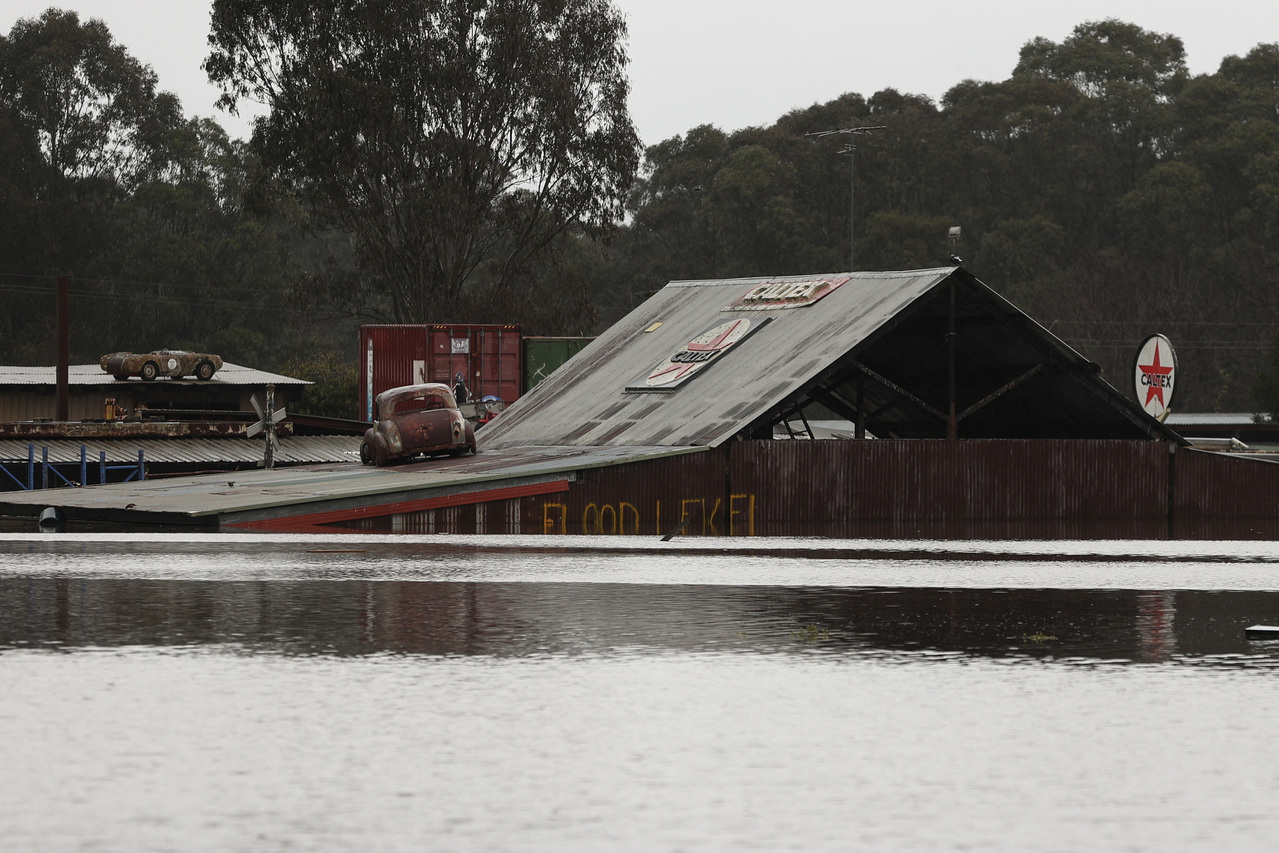Climate link to Sydney floods points to growing disaster risks
Sign up now: Get insights on Asia's fast-moving developments

A flood-level marking from a previous flooding event is seen on the side of a structure in the Londonderry suburb of Sydney on July 5, 2022.
PHOTO: REUTERS
Follow topic:
SINGAPORE - Climate change is fuelling the weather causing severe floods in Sydney, scientists say, and as the planet heats up, more damaging flooding events in Australia - and elsewhere - can be expected.
The present floods, the third and heaviest this year to inundate parts of Sydney, have been linked to La Nina, a naturally occurring Pacific Ocean climate pattern that typically brings wetter weather to eastern Australia and South-east Asia.
But climate change is causing La Nina's impacts to become more severe, scientists say. Similarly so for El Nino, the flip side to La Nina, which usually triggers hotter weather and drought in Australia and South-east Asia.
"In a warming planet, there is more moisture in the atmosphere. So when it rains, more water comes down with it," explained Dr Agus Santoso of the Climate Change Research Centre at the University of New South Wales in Sydney.
"Climate change is exacerbating the effect of La Nina. Our research suggests that climate change increases the frequency of strong La Nina events. However, even if La Nina events themselves do not change, the impacts are expected to be more severe. The flooding events that are currently unfolding may be a reflection of that," he told The Straits Times.
La Nina causes the large-scale cooling of surface temperatures in the central and eastern equatorial Pacific Ocean that occurs every two to seven years. The present La Nina episode started in 2020 and continued largely uninterrupted until June this year, when Australia's national weather agency, the Bureau of Meteorology, declared the event over but gave it a 50-50 chance to re-form later this year.
Even as the influence of the present La Nina wanes, another weather phenomenon is set to bring more rainfall to South-eastern Australia in the coming months - a negative Indian Ocean Dipole (IOD).
During this periodic event, the eastern Indian Ocean is warmer than normal and the western Indian Ocean near Africa is cooler. This causes more moisture-filled air to flow towards Australia and South-east Asia. The weather bureau said a negative IOD increases the chances of above average rainfall from June to November for much of Australia.
Conversely, positive IODs have the opposite effect. A strong positive IOD was partly to blame for severe drought across eastern Australia in 2019 that fuelled record bush fires.
With so much rain over the past two years, catchments are saturated. But the planning authorities have also made things worse by allowing continued urban expansion into floodplains in Sydney and elsewhere, putting thousands of homes at risk.
This has increased the need to try to reduce the impacts of floods, tackling the urban sprawl and building higher bridges and other flood defences.
"The repeated flood events across the Australian east coast foreshadow a future of wild weather, disruption and loss unless we act now," said Professor Mark Howden, director of the Institute for Climate, Energy & Disaster Solutions at The Australian National University in Canberra.
"Without a clear plan to confront global warming and its impacts, we can expect this disruption to ramp up over time," he said in a commentary on Tuesday (July 5) in The Sydney Morning Herald.
He said reducing the risks meant shifting people and property out of harm's way. A focus area is the Hawkesbury-Nepean floodplain in western Sydney where the worst flooding has occurred.
"We can reduce both exposure to flood and sensitivity to flood by not further developing the Hawkesbury-Nepean floodplain, by relocating existing people and structures in risky locations, and by raising the levels of housing or by improving early warning systems," he said.
The flood crisis underscores the wider threat from weather-related disasters across the country that is set to affect more homes and businesses and drive up insurance costs.
The government, for instance, plans to set up a Disaster Ready Fund to provide up to A$200 million (S$191 million) a year for disaster prevention and resilience programmes.
In May, a report by the Climate Council titled Uninsurable Nation: Australia's Most Climate-Vulnerable Places found that approximately 520,940 properties, or one in every 25, will be "high risk", facing potential annual damage costs from extreme weather and climate change that make them effectively uninsurable by 2030.
Riverine flooding posed the biggest risk to properties, said the report by the council, a climate change communications non-governmental organisation. Of the properties classified as uninsurable by 2030, a total of 80 per cent were at risk due to riverine flooding.

